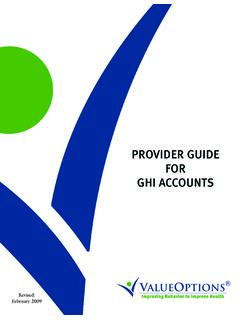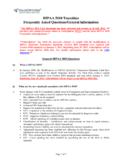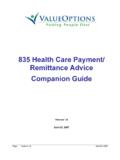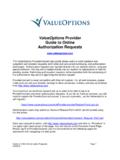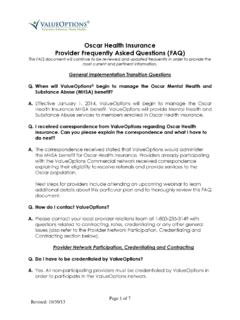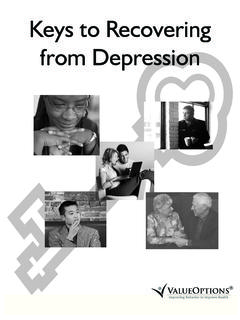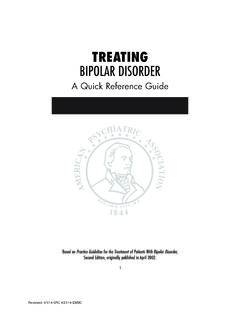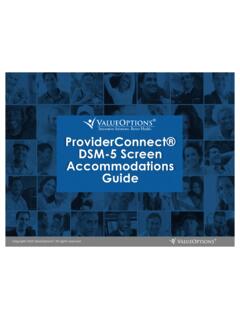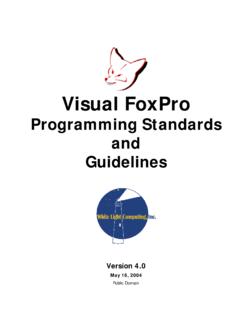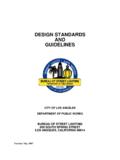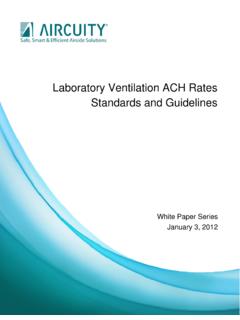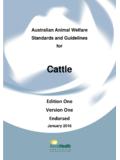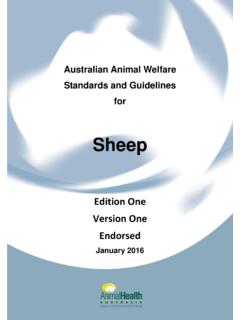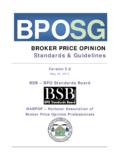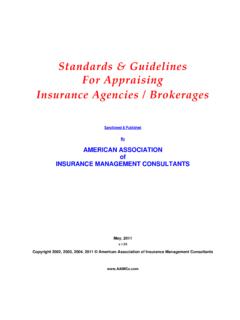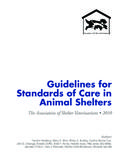Transcription of EAPA STANDARDS AND PROFESSIONAL GUIDELINES
1 2010 Edition EAPA STANDARDS . AND. PROFESSIONAL GUIDELINES . FOR EMPLOYEE ASSISTANCE PROGRAMS. Published by Employee Assistance Professionals Association 4350 N. Fairfax Drive Suite 410. Arlington, VA 22203. Adopted: 4/18/11. Reviewed: 2/9/15 SRC / 2/17/15 CMMC. TABLE OF CONTENTS. INTRODUCTION 3. A. Purpose 3. B. Organization 3. C. History and Background 4. D. Current STANDARDS 5. DEFINITION OF AN EMPLOYEE ASSISTANCE PROGRAM (EAP) AND EAP CORE TECHNOLOGY 6. STANDARDS AND PROFESSIONAL GUIDELINES 7. I. PROGRAM DESIGN 7.
2 A. Needs Assessment 7. B. Regulatory Compliance 7. C. Advisory Function 8. D. Service Delivery Systems 9. E. Additional Services 10. F. Organization Employee Assistance Program Policy Statement 11. G. Implementation Plan 12. II. MANAGEMENT AND ADMINISTRATION 13. A. EAP Administrative and Operating Procedures 13. B. Staffing Levels 14. C. Staff and Affiliate Criteria 15. D. Affiliate Management 16. E. Employee Assistance Program Consultation and Case Supervision 16. F. PROFESSIONAL Development 17. G. Record Keeping 18.
3 H. Risk Management 19. I. Ethics 20. III. CONFIDENTIALITY AND REGULATORY IMPACT ON PROTECTIVE RIGHTS 21. IV. EMPLOYEE ASSISTANCE PROGRAM DIRECT SERVICES 23. A. Problem Identification/Assessment and Referral 23. B. Crisis Intervention 24. C. Short-Term Problem Resolution 25. D. Monitoring and Follow-Up Services 26. E. Training of Organization Leadership 27. F. Consultation with Organization Leadership 27. G. Organizational Consultation 28. H. Program Promotion and Education 29. V. DRUG FREE WORKPLACE/SUBSTANCE ABUSE PROFESSIONAL (SAP) SERVICES 29.
4 A. Drug-Free Workplace 29. B. Department of Transportation (DOT) Regulations 30. C. EA Professionals in the SAP Role 30. VI. STRATEGIC PARTNERSHIPS 31. A. Internal Organizational Activities 31. B. Managed Care Systems 33. C. Work/Life, Health Promotion, and Related Services 34. D. External Community Organizations and Resources 34. E. External Agencies 36. VII. EVALUATION 36. Appendix 2009-2010 STANDARDS Task Force members 39. EAPA STANDARDS and PROFESSIONAL GUIDELINES 2. for Employee Assistance Programs Adopted: 4/18/11.
5 Reviewed: 2/9/15 SRC / 2/17/15 CMMC. INTRODUCTION. A. PURPOSE. The purpose of these Employee Assistance Professionals Association (EAPA). STANDARDS and PROFESSIONAL GUIDELINES for Employee Assistance Programs is to: Define employee assistance programs and the EA profession;. Promote the highest quality employee assistance programs;. Provide the foundation for program evaluation and accreditation;. Describe the scope of employee assistance services;. Educate purchasers of employee assistance services;. Operationalize program STANDARDS , GUIDELINES and definitions; and Serve the needs of the EAPA membership and other professionals.
6 This document identifies a coordinated set of policies, procedures, and activities. When designing its EAP, each organization applies these STANDARDS and PROFESSIONAL GUIDELINES based on its own unique mission, operation and culture. B. ORGANIZATION. The EAPA STANDARDS and PROFESSIONAL GUIDELINES for Employee Assistance Programs are organized in the following format: STANDARD: The STANDARDS are the fundamental elements required for an effective employee assistance program. A comprehensive EAP will meet all the STANDARDS described in this document.
7 INTENT: The Intent describes the role each standard plays in an effective EAP. ESSENTIAL COMPONENTS: Essential components must be present for an EAP to meet the standard. RECOMMENDED COMPONENTS: Recommended components are desirable in an EAP but are not necessary to meet the standard. EXAMPLES: EAPA STANDARDS and PROFESSIONAL GUIDELINES 3. for Employee Assistance Programs Adopted: 4/18/11. Reviewed: 2/9/15 SRC / 2/17/15 CMMC. Examples, when included, illustrate one or more specific applications of the standard or one of its essential or recommended components.
8 Examples are not requirements, nor are they intended to represent all acceptable approaches to meeting a standard. C. HISTORY AND BACKGROUND. The STANDARDS for Employee Alcoholism and/or Assistance Programs were originally drafted in 1981 by a joint committee representing these national groups: The Association of Labor/Management Administrators and Consultants on Alcoholism (ALMACA). The National Council on Alcoholism (NCA). The Occupational Program Consultants Association (OPCA). The National Institute on Alcohol Abuse and Alcoholism (NIAAA).
9 The American Federation of Labor and Congress of Industrial Organizations (AFL- CIO). In 1981, approximately 2,800 EA professionals representing 8,000 programs belonged to ALMACA. By 1991, ALMACA had become the Employee Assistance Professionals Association (EAPA), the number of individuals providing employee assistance services had increased substantially to an estimated 20,000, and the EAPA membership had grown to more than 7,000 professionals and 80 chapters. In 1988, EAPA recognized the need for more detailed STANDARDS reflecting advancements in the employee assistance profession.
10 EAPA appointed a Program STANDARDS Committee to develop revised program STANDARDS . The Committee began a five part development process. Part One, EAPA STANDARDS for Employee Assistance Programs, published in 1990, set forth specific program STANDARDS , each of which was accompanied by a statement of intent. These program STANDARDS identified the core ingredients of employee assistance programs. They were organized into six fundamental areas: 1. Design 4. Management and Administration 2. Evaluation 5. Direct Services 3.
